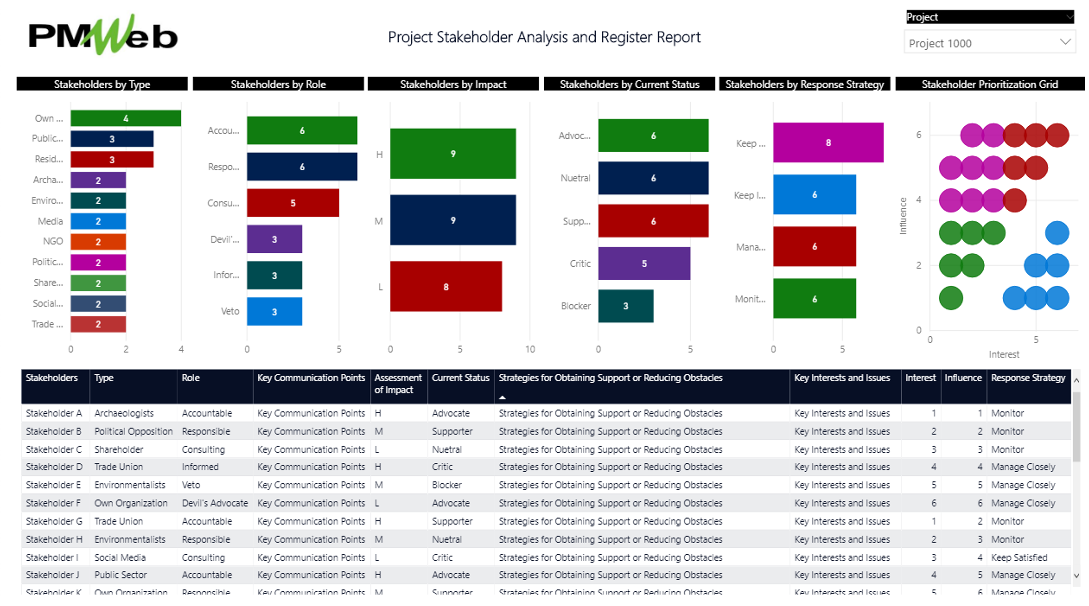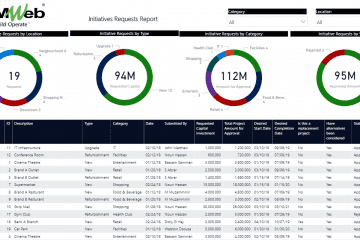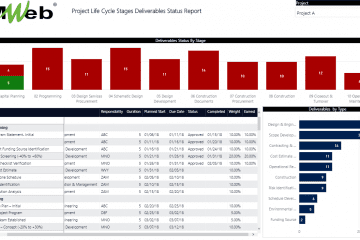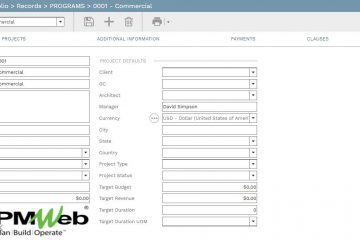Capital projects’ stakeholders are those with interest in the project’s outcome. They are typically the project team members, project managers, executives, project sponsors, customers, and users. Capital projects’ stakeholders are invested in the project and who will be affected by your project at any point along the way. And their input can directly impact the outcome. For mega capital projects, the list of direct and indirect stakeholders can be extensive, and failing to identify and manage those stakeholders could increase the high risk of project failure. The stakeholder influence chart of Beirut Central District, also known as SOLIDERE, is an example of how complicated stakeholder analysis and management can be.
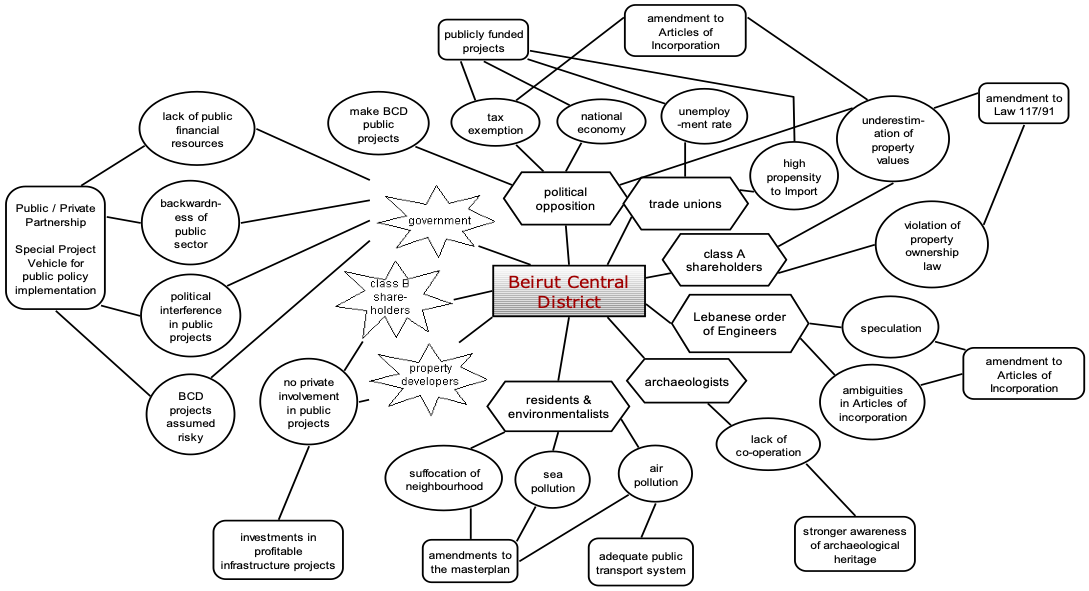
Implementing a formal capital projects’ stakeholder management process is crucial for identifying people or organizations that may impact the project and enables the project management team to develop strategies to manage those stakeholders’ expectations. Using a Project Management Information System (PMIS) like PMWeb, organizations can create a formal process for identifying, analyzing, and managing capital projects’ stakeholders. The data captured for those stakeholders will become available for the organization should the same stakeholders are encountered other projects managed by the organization.
PMWeb’s module will capture the names and address details of all possible stakeholders, including each stakeholder entity’s GIS location, by providing the latitude and longitude values. The details of all individuals who might be included in the stakeholder assessment will also be captured in the companies’ module. This list of capital projects’ stakeholders will become available for all projects managed in PMWeb.
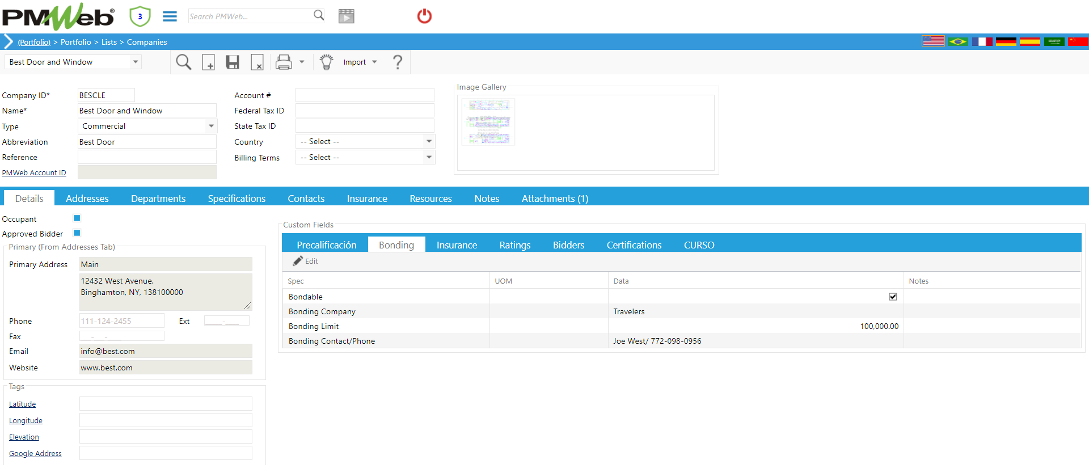
The Project Stakeholder Analysis form will be created using PMWeb custom form builder. It is essential to have a comprehensive form and capture all possible details on the stakeholder to enable the project team to select the right strategy for managing the stakeholder. The role will identify the part of the stakeholder which could be Accountable for outcomes of the decisions “the buck stops here”, Responsible for executing “ensure the work gets done”, Consulting for those Involved in the process, but not decision-makers, Informed for those who need to be communicated on the outcome of a decision, Veto for those who have the authority where can the decision be overridden and Devil’s Advocate for those who speak to the downsizing of the findings. The form will include the details of fundamental interests and issues such as benefits, changes by stakeholders, damage, or conflict. The form will consist of assessing the impact of the stakeholder’s critical interests that could High, Medium or Low. The form will consist of the currents status of the stakeholder, which could be advocate, supporter, neutral, critic, or blocker.
Based on the stakeholder captured details, the form will include the strategies for obtaining support and reducing obstacles. The form will also include details of the key communication points to deal with the stakeholder. The stakeholder assessment will identify the stakeholder’s influence and interest on a scale of 6 points, where one is very low, and six is very high. This will enable in defining the stakeholder response strategy, which could be Keep Satisfied for increased interest and low influence, Manage Closely for increased interest and great power, Keep Informed for low interest and strong influence, and Monitor for low interest and low influence.
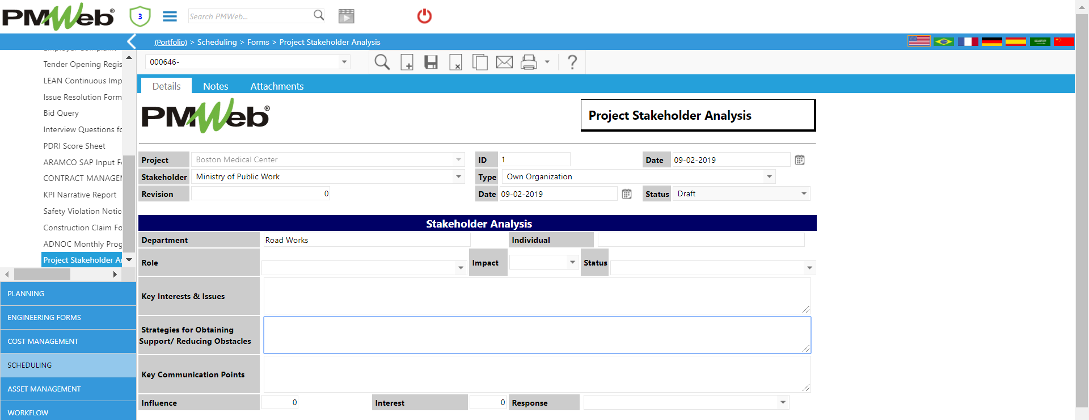
The form will also include a list of key questions that will help get more details and understanding of the stakeholder and their influence and interest in the project. The questions will help prompt answers on how the stakeholder is likely to feel about and react to the project. Also, it helps the project team to know how best to engage the stakeholder in the project and how best to communicate with them.
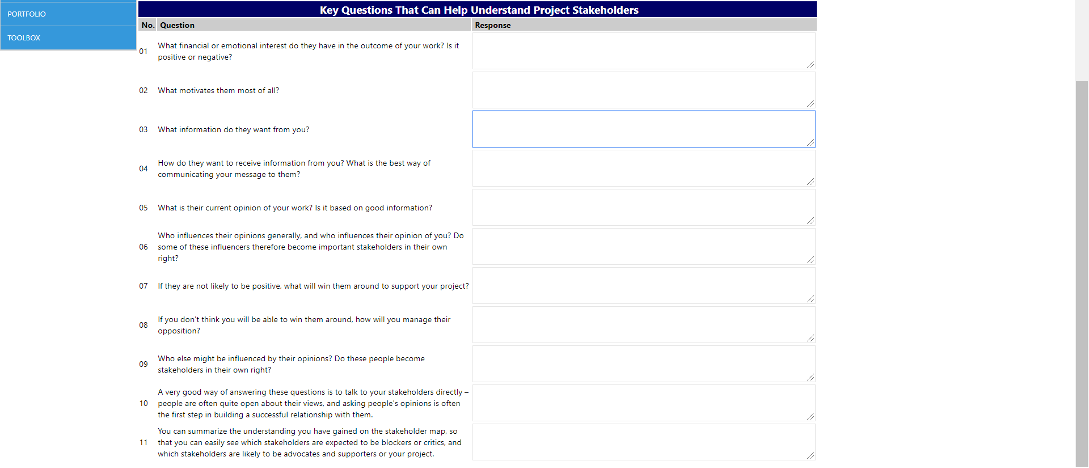
The Project Stakeholder Analysis form will also include a table that will list the Stakeholder Interface Actions that need to be taken to manage and engage the stakeholder. For each identified action, there will be fields for the due date, actual date, and status if it has been completed.

The Project Stakeholder Analysis form attachment tab will be used to attach all supportive documents used in the stakeholder assessment and response. The form will also include a workflow to formalize the review and approval of the stakeholder analysis.
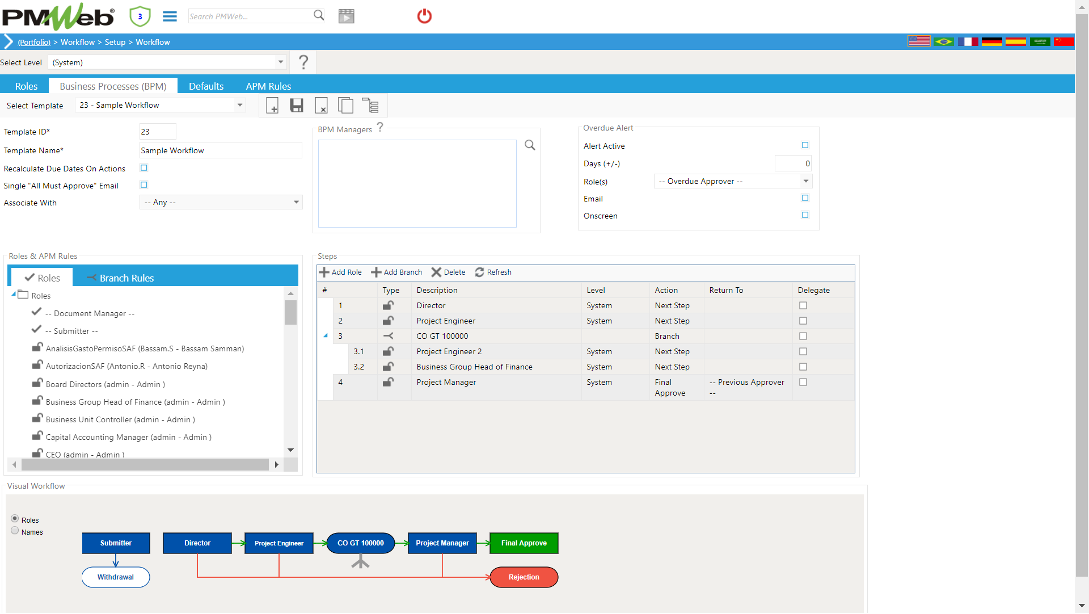
The data captured in the Project Stakeholder Analysis form will become the basis for creating the stakeholder analysis and register report. The report will include a register of all identified capital projects’ stakeholders and the captured data for each stakeholder. The report contains five visuals to group the capital projects’ stakeholders by stakeholder company type, stakeholder role, assessment of impact, current stakeholder status, and selected-response strategy. The report will also include a visual for stakeholder prioritization grid, which shows each stakeholder reported interest and influence against a score of 6 for each. The chart color code the stakeholders by the four types of response strategy being Keep Satisfied for high interest and low influence, Manage Closely for increased interest and strong influence, Keep Informed for low interest and increased influence, and Monitor for low interest and low influence.
